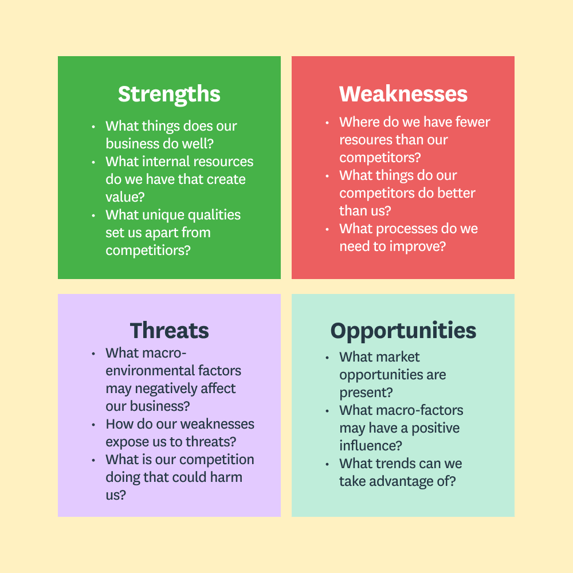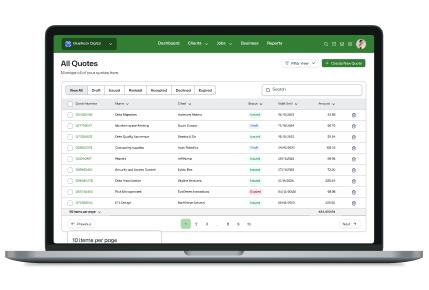As a new business owner, you likely spend most of your time in the day-to-day operations of your business.
However, once you've got your business off the ground and found your place in the market, it's time to think about long term planning and strategy.
In this blog post, we provide an introduction to creating a small business strategy plan so you can continue guiding your business in the right direction.
What is a strategic plan?
In a strategic plan, you set out your goals for the business and a strategy for making them a reality. The plan is valuable for plotting a course of action to meet your goals. It’s also an important document to help staff, shareholders, stakeholders and potential investors to see the big picture for your company.
Everyone's strategic plan will be different depending on their unique business needs and goals, but most plans should include the following eight sections.
The foundations of a strategic plan
Section 1: The executive summary
The point of this section is to succinctly outline your plan for the business and its direction. It should be written in a way that helps employees, stakeholders, investors and other interested parties quickly grasp the concepts, even if they don’t understand the industry.
Tips for the executive summary:
- Complete this section last. You’ll be able to call out ideas and information that you’ve created for the other sections.
- Don’t go into details or give numbers, unless they are big, round conceptual numbers. Just focus on the big picture.
Section 2: Mission statement
Your mission statement is your company manifesto. It’s what you bring to the world. It’s who you are and why you do what you do. In the statement, focus on the overarching goals and themes for your company.
Tips for the mission statement:
- Don’t overthink it. For many business owners this is the hardest section to write. Just start by writing freely about your own goals and where you want the company to be in five or ten years. Let the words flow out. You can edit later.
- Have a look at mission statements on other company websites to get an idea of how others articulate the essence of their businesses.
- Think of the mission statement as the document that drives all your decisions. Employees and stakeholders should be able to read the statement before making a difficult choice, and then be able to say, “This is the choice that aligns with the company’s goals.”
Section 3: Conduct a SWOT analysis
When you do a SWOT analysis, you look at your company’s strengths, weaknesses, opportunities and threats. Once you do the analysis, you’ve got a good picture of the internal and external factors that can influence your goals. This knowledge can feed into your strategy by helping you decide what to focus on and where you have to overcome obstacles.
Here's an example of some questions you might ask in each section of the SWOT analysis:

Tips for SWOT analysis:
- Be objective – try to step away from your feelings about your business and complete the analysis from an unbiased perspective.
- Involve a range of stakeholders for a more comprehensive view of what you’re doing well and what needs improvement.
- Look at examples of SWOT analyses done on other businesses to understand what you need to do.
Section 4: Goals
You move your company forward by setting and achieving specific goals, whether those goals are based on a certain number of customers or income, or something else entirely. In this section, you identify a series of goals for the company.
Tips for writing goals:
- Make sure your goals are SMART: specific, measurable, achievable, reasonable and timely.
- First, set your long-term goals. These have a time frame of five to ten years.
- Then, identify the steps that need to be taken to reach those goals. Drill down until each step can be identified as a short- or medium-term goal.
- Don’t feel as though you’re locked down to the plan or your goals. Things could change over the next couple of years, and your strategic plan will simply change too. But having a plan in place to start with, even if it isn’t the plan you finish with, is vital for your continued success.
- In the goals section, you should also include data on your key performance indicators - KPIs. These are the numbers that tell you how you’re doing against your goals. You need to track these KPIs and measure them regularly so you can continue to plot a course towards your goals.
Section 5: Financial plan
So, where’s the money for your great goals and plans going to come from? In the financial plan section, you outline the hard numbers.
Tips for the financial plan:
- Don’t try and do this section yourself, unless you’re an accountant. Bring a business analyst or accountant on board to give you accurate, realistic figures.
- Financial projections often include three scenarios: A conservative scenario, a likely scenario, and an aspirational scenario. Remember not to base your expectations on the latter.
- Once you’ve got the financial plan in place, you should track your progress month-to-month against your goals. Using software (such as job management software for professional services businesses) can help you get an accurate picture of how your business is doing and whether you need to move the guideposts.
Section 6: Target customers and industry analysis
In this section, you take an in-depth look at the state of your industry and the clients and customers you serve.
Tips for the industry and customer analysis:
- Look closely at your competitors and figure out their strengths and weaknesses in the market. In order to surpass them, you need to truly understand them.
- Use this data to figure out your own competitive strengths and weaknesses. Do you have any strategies for eliminating or minimising them?
- Figure out if your market is growing or shrinking, and what demand you can expect for your product/service to be over the life of your company.
Section 7: Marketing plan
The marketing plan outlines how you intend to present your company to market and what your goals and projections are for increasing your customer base or reaching the next level.
Tips for the marketing plan:
- First, define and outline your USP – unique selling proposition. This is the ‘it’ factor that sets your company apart from the rest. Your USP should be something that resonates strongly with customers, such as delivering quality, speed or a unique product.
- Next, think about how your product or service positioned. Is it accurate? Does it need to shift to better meet your target audience?
- Think also about different distribution channels and how the marketing for each channel may differ. For example, if you own a retail store, but you also sell online, how will you market those two different storefronts?
- What kinds of offers and special deals are you going to provide?
- What marketing collateral do you have and what do you still need to create?
- Outline both your above-the-line and below-the-line strategies.
Section 8: Conclusion
Wrap everything up at the end with a clever conclusion and a peppy statement about your company’s bright future. Bring information from the different sections together to focus attention on the important areas for growth and the areas you need to improve.
Depending on the type of business you are operating, you may need additional sections, particularly where you talk about your team or operations plan, or provide specific financial details.
Once you've established a strategic business plan, you'll need the right tools to put it in action.
WorkflowMax by BlueRock all-in-one job management software will help your professional service business manage projects from lead to quote to invoice and everything in between.




